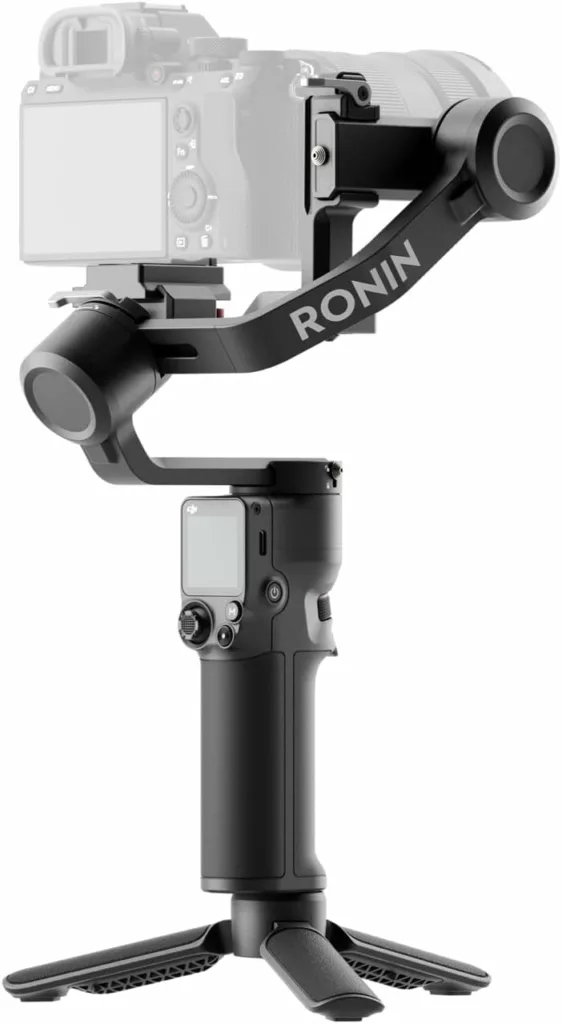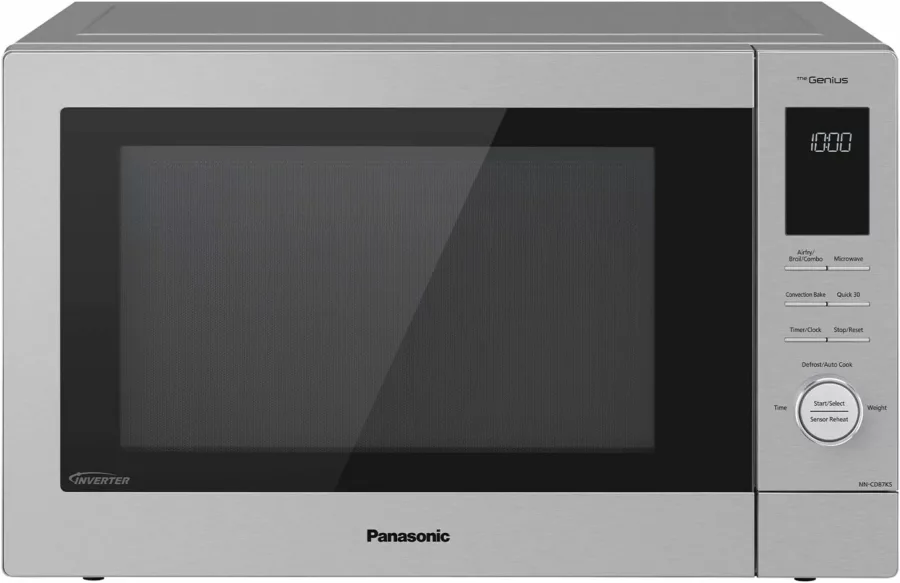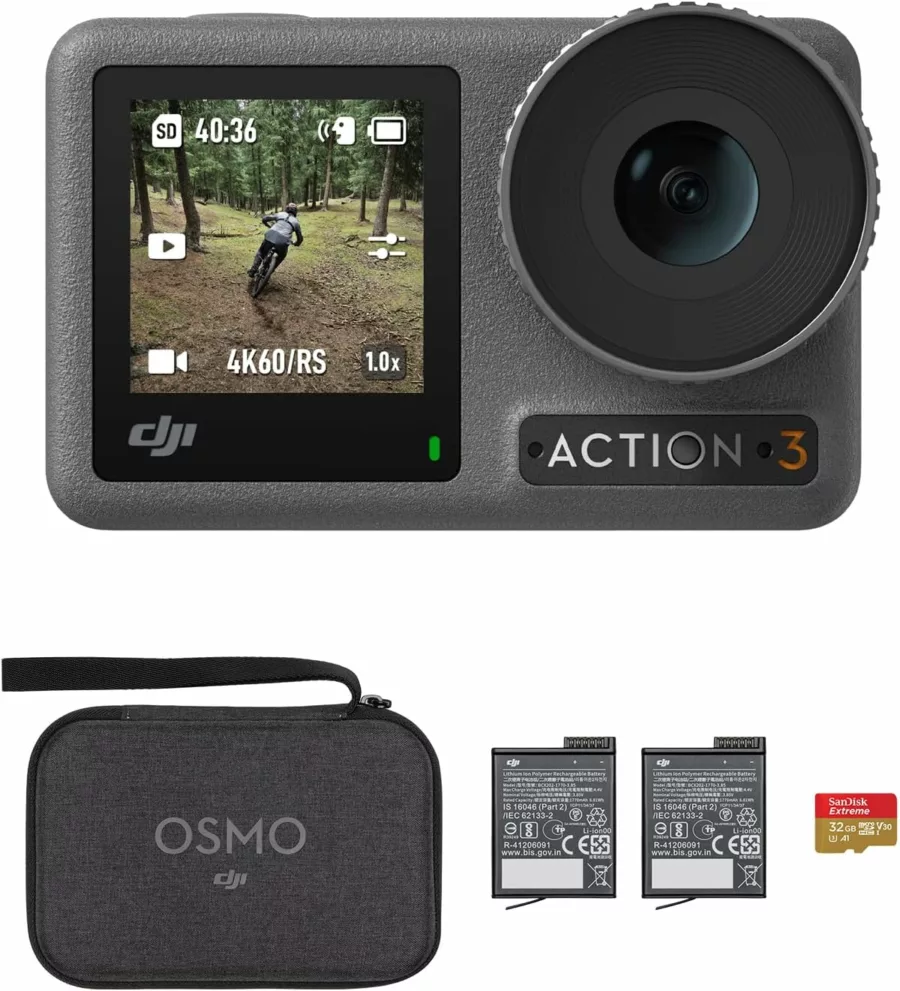With its impressive load capacity of up to 2 kg (4.4 lbs) and a range of advanced features like Bluetooth shutter control and native vertical shooting, this gimbal promises to deliver professional-level image stabilization for smooth and high-quality footage.
I recently had the opportunity to test out the DJI RS 3 Mini with my Canon 90D and a 70-105 lens, and I must say, this gimbal exceeded my expectations. Despite the weight of my camera and lens combo, the gimbal itself felt surprisingly light and well-made. The initial balancing process was a bit challenging, but after watching some helpful YouTube videos, I was able to get it perfectly balanced.
Once everything was set up, the performance of the gimbal was outstanding. The 3rd-gen RS stabilization algorithm provided exceptional stability, even when shooting low-angle shots or filming in flashlight mode. The footage captured was incredibly smooth, giving a professional touch to my videos.
The Bluetooth shutter control feature was incredibly convenient, allowing me to control photo capture and video recording directly from the gimbal. It automatically reconnected to my camera after the initial pairing, making it hassle-free to use.
The gimbal’s 1.4″ full-color touchscreen was a great addition, providing easy access to frequently used settings. It took a little practice to navigate the menu system, but once I got the hang of it, adjusting settings became effortless.
DJI RS 3: Lightweight and Portable

Its lightweight and portable design makes the DJI RS 3 Mini one of the standout features. Weighing only 795g (1.75 lbs), this camera stabilizer is incredibly easy to hold and maneuver, making it perfect for travel and extended shooting sessions. Despite its compact size, the RS 3 Mini is built to last and feels sturdy in your hands. Whether you’re capturing footage on the go or shooting in challenging environments, the lightweight design of the RS 3 Mini ensures that you can easily handle it without sacrificing stability.
DJI RS 3: Wide-Ranging Compatibility

Thanks to its strong, high-torque motors, the RS 3 Mini camera stabilizer boasts impressive compatibility. With a load capacity of up to 2 kg (4.4 lbs), this gimbal can support a wide range of camera and lens combinations. Whether you’re using a Canon, Sony, Panasonic, Nikon, or Fujifilm camera, the RS 3 Mini is equipped to handle it. This versatility allows you to experiment with different setups and achieve the desired shots without worrying about compatibility issues. The RS 3 Mini gives you the freedom to unleash your creativity and capture stunning footage with ease.
DJI RS 3: Bluetooth Shutter Control

The Bluetooth shutter control feature takes convenience to the next level with the DJI RS 3 Mini. Once you’ve paired your camera with the gimbal, it automatically reconnects every time you use it. This means you can easily control photo capture and video recording directly from the gimbal itself, eliminating the need to touch your camera. Whether you’re shooting a selfie or capturing action-packed footage, the Bluetooth shutter control feature allows for seamless and hands-free operation, giving you more flexibility and control over your shots.
3rd-Gen RS Stabilization Algorithm

Professional-level image stabilization is provided by the DJI RS 3 Mini with its 3rd-Gen RS stabilization algorithm. This advanced algorithm ensures that your footage remains smooth and steady, even when shooting low-angle shots or filming in flashlight mode. The RS 3 Mini’s stabilization capabilities allow you to capture cinematic-quality footage without the need for expensive and bulky equipment. Whether you’re filming fast-paced action or slow-motion sequences, the RS 3 Mini delivers outstanding stabilization to elevate the quality of your videos.
DJI RS 3: Native Vertical Shooting

Shooting content for social media platforms is incredibly convenient with the native vertical shooting feature of the DJI RS 3 Mini. By simply mounting the quick-release plate to the vertical arm of the gimbal, you’re ready to capture vertical videos effortlessly. This eliminates the need for manual cropping or rotating in post-production, saving you valuable time and effort. The RS 3 Mini’s native vertical shooting capability ensures that your content is optimized for social media platforms, allowing you to share your videos seamlessly with your audience.
DJI RS 3: 1.4″ Full-Color Touchscreen
Usability is not compromised by the compact design of the DJI RS 3 Mini. It features a 1.4-inch full-color touchscreen that displays a new and intuitive UI design. This touchscreen allows you to access frequently used settings at your fingertips, making it easy to adjust parameters and customize your shooting experience. The touchscreen interface enhances the overall user experience, providing a seamless and efficient way to navigate through the gimbal’s features and settings. With the RS 3 Mini’s touchscreen, you’ll have full control over your shooting experience right at your fingertips.
Pros:
- Lightweight and Portable – The DJI RS 3 Mini weighs only 795g (1.75 lbs), making it convenient for travel and easy to hold for extended shooting.
- Wide-Ranging Compatibility – With a load capacity of up to 2 kg (4.4 lbs), the RS 3 Mini can handle a wide range of camera and lens combinations, thanks to its strong, high-torque motors.
- Bluetooth Shutter Control – The RS 3 Mini allows for easy control of photo capture and video recording via the gimbal, with the camera automatically reconnecting after the initial pairing.
Cons:
- Initial Balancing Process – Some users found the initial balancing process to be somewhat tough, but there are helpful YouTube videos available to guide you through it.
- DJI App Privacy Concerns – The DJI app requires a significant amount of personal information, and the user agreements grant DJI access to a wide range of data. It’s important to read the agreements carefully before committing to using the app.
- Limited Screen Visibility – While the RS 3 Mini’s handle has a joystick for easy camera control, it may be challenging to see the camera screen unless you purchase an additional attachment to view it on another device.
Read also:
- The DJI Mavic 3 Pro Lets You Unlock the Sky’s Limit
- Drone for Home Inspection – DJI Mavic 3 Pro: The Ultimate Aerial Photography
- DJI Drone Home Inspection: A Roundup of Top-Performing Drones for Aerial Photography
- DJI Mavic Mini: Compact and Feature-Packed Drone Review
- DJI Mini 4 Pro Fly More Combo Plus: A Compact and Feature-Packed Drone for Enthusiasts
Conclusion
In conclusion, the DJI RS 3 Mini is an excellent gimbal stabilizer that offers impressive performance and a range of useful features. Its lightweight and portable design make it ideal for travel, and its wide-ranging compatibility ensures compatibility with various camera and lens combinations. The smooth footage it produces, along with the native vertical shooting option, makes it a perfect tool for content creators looking to capture professional-level shots for social media.
While the initial balancing process and menu navigation may require a bit of practice, the overall performance and build quality of the RS 3 Mini make it a worthwhile investment. Whether you’re a professional videographer or an enthusiast looking to up your video production game, I highly recommend considering the DJI RS 3 Mini as your go-to gimbal stabilizer.
Questions & Answers:
Question: Is the DJI RS 3 Mini easy to carry around?
Answer: Yes, the RS 3 Mini is lightweight and portable, weighing only 795g (1.75 lbs), making it convenient for travel.
Question: Can the RS 3 Mini handle heavy camera and lens combinations?
Answer: Yes, with its strong, high-torque motors, the RS 3 Mini has a load capacity of up to 2 kg (4.4 lbs), allowing it to handle a wide range of camera and lens combinations.
Question: How can I control photo capture and video recording with the RS 3 Mini?
Answer: You can easily control photo capture and video recording via the gimbal using Bluetooth Shutter Control. The camera will automatically reconnect after the initial pairing.








